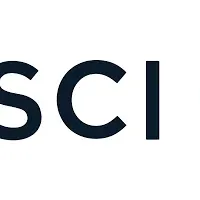
Projected Growth of the Foreign Exchange Market: Key Factors Driving Trends from 2025-2029
The Growth of the Foreign Exchange Market: 2025-2029
The foreign exchange (Forex) market is anticipated to witness remarkable growth, projected to increase by USD 582 billion between 2025 and 2029. According to a recent report from Technavio, this growth is primarily fueled by urbanization and digitalization trends that result in increased trading activity and opportunities around the clock.
Market Dynamics
Drivers of Growth
The global landscape of currency trading is evolving rapidly, with more participants, including individuals and smaller businesses, accessing the market through advanced technology and digital platforms. Urbanization plays a critical role, as growing numbers of people migrate to urban areas, creating higher demand for currency transactions to accommodate international trade and investment.
Digitalization further enhances this accessibility, promoting an environment where trading can occur 24/7. The rise of artificial intelligence (AI) is transforming how market trends are analyzed and interpreted, making trading not only more efficient but also more precise. AI tools provide actionable insights and empower traders by optimizing their decision-making processes based on data-driven analysis.
Trading Volume and Market Structure
Currently, the Forex market is the largest and most liquid financial market globally, with an average daily trading volume exceeding USD 6 trillion. Major currency pairs, such as EUR/USD and GBP/USD, account for much of this volume. Additionally, factors like interest rate differentials and international economic indicators continue to shape currency movements.
Despite its growth potential, the Forex market faces challenges, primarily related to currency exchange rate fluctuations and political uncertainties worldwide. For instance, if a currency pair's value changes before a transaction is completed, it can lead to significant financial implications for parties involved. Hence, effective risk management and hedging strategies are essential for capitalizing on market opportunities while minimizing potential losses.
Key Players in the Market
Among the key financial institutions influencing the Forex market are well-known banks and investment firms, such as Bank of America, Citigroup, and Deutsche Bank. These entities not only facilitate large-scale trades for corporations but also engage in currency swaps and trading programs to maximize returns on their investments.
Geographic Trends
From a regional perspective, Europe contributes the most to the Forex market, accounting for approximately 47% of total trading volume. The United States, the UK, and other developed economies maintain robust participation due to established financial systems that support extensive trading networks.
Emerging markets present new opportunities as they adapt to the demands of globalization, increasing their share in the Forex arena. Countries like China, Brazil, and India are gradually enhancing their contributions to the market through international trade arrangements and investments.
Future Prospects and Challenges
While the projections for growth appear positive, the Forex market is not without risks. Geopolitical events, inflationary pressures, and evolving regulatory frameworks pose challenges that could affect trading momentum. Furthermore, technological advancements must be continuously integrated to keep pace with market demands, ensuring that traders have the tools needed to navigate this dynamic environment effectively.
In conclusion, the foreign exchange market is poised for substantial growth driven by urbanization, digital transformation, and enhanced market accessibility through AI. As the landscape of trading evolves, both participants and key players must be prepared to adapt to changes and leverage new opportunities that arise during this transformative period from 2025 to 2029.
Topics Financial Services & Investing)










【About Using Articles】
You can freely use the title and article content by linking to the page where the article is posted.
※ Images cannot be used.
【About Links】
Links are free to use.